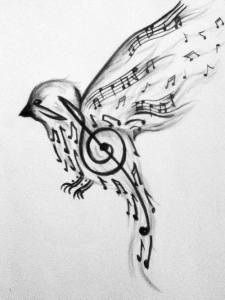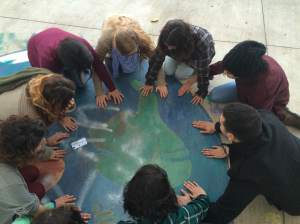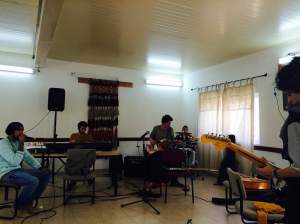Today I feel called to write. To go deeper into what I do not know. To question further what I am discovering.
We were around seven meetings into our music education-facilitation course, and I felt frustrated. Something was wrong. Part of that responsibility was my own as one of the educators of the group of Israelis and Palestinians learning facilitation skills with and through utilizing the expressive arts, and yet that was not just it. The other entity at fault was the reality enveloping us all: the Israeli-Palestinian conflict and its impact on socialization and inflicted trauma. As I spoke with one student during an activity trying to reach him, to make him think beyond what has been forced into his mind as a form of submission, inside I felt desperate. Remain calm. Move slowly. Think deeper. Unfold carefully. Love truly. How deeply had this young man been socialized by the conflict, by trauma, and the education system to be functional, and yet with a sleeping consciousness. How could he begin to imagine and think beyond these forces, to think for himself on his own terms as a young person with already the knowledge and experiences to speak his own truths – to awaken. Sometimes I think I am not prepared to do this; sometimes I think maybe I am not supposed to do this at all. After all, am I not also part of the system? This is in the back of mind all the time – submission of another kind that must also be disrupted.
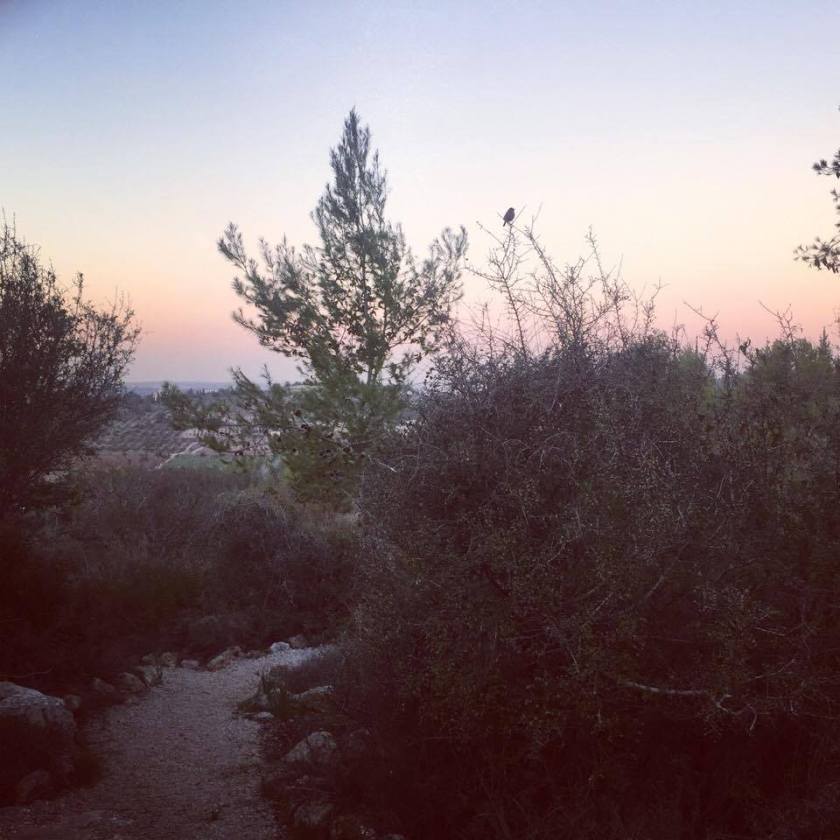
This is not my first encounter of this situation with both Israelis and Palestinians of all ages and sectors, but as I work with Palestinian and Israeli youth (and in the summers with Tunisian youth), this is where I encounter it the most. It is not just the loud and terrifying violent events that intrude our lives – for some occasionally and others daily, but rather the quiet and disturbing presence of the conflict in so many aspects of life here, stifling creativity, imagination, and critical thinking. The longer I am here, the more convinced I am of how incredibly deep its influence is in all sectors of society and everyday life from the mundane to the psychosocial. Though Israelis and Palestinians are both resilient “in defiance of and because of” (Gaye, 2014) the conflict, this then still does not leave much energy or room to confront the socialization of the conflict, trauma, and the conflict in general in ways that explore, as Greene says, beyond the dualities (1995) of what is. If the conflict and occupation relentlessly forces us into submission through its cyclical routine, domination, and impossibility as it oppresses both Palestinians and Israelis in differing ways, then we must be disruptive with equal force and possibility. Perhaps this is simply nonviolence, which can also be described as “positive force.” Perhaps in transformational educational spaces, this is where we can find and re-find, see and hear our true selves, discovering our power to overcome and co-create beyond what is, as individuals and then maybe as a society.
“All depends upon a breaking free, a leap, and then a question. I would like to claim that this is how learning happens and that the educative task is to create situations in which the young are moved to begin to ask, in all the tones of voice there are, “Why?” – Maxine Greene, p. 6, Releasing the Imagination
Like Maxine Greene says, we must be moved to ask “why” in all of “the tones of voices there are” (Greene, p.6, 1995). In a protracted conflict, asking “why” can feel dangerous. Any part of life, whether nationalistic ambitions, religious understanding, methods of resistance, which cannot be questioned, simply become dogmatic – an “ism.” Suppressing and not teaching the act of questioning of society and oneself enables old, oppressive structures to remain in place. Often I tell my students, “If there is nothing to question, there is nothing to learn. And there is always more to learn, therefore there is always more to question.” Enabling these oppressive structures to stay in place by those who benefit from them is its own kind of “banking concept” (1970) as Paulo Freire speaks of, where there are “attempts to control thinking and action,” which then “inhibits their [women and men’s] creative power” (Freire, p.77, 1970). I ask my students questions, such as: “How do we break free, as Greene speaks of, from the given, the taken-for-granted, the ordinary? What feelings are involved in breaking away? What is “wide-awakeness” in the context of the Israeli-Palestinian conflict or to you? If we are all “becoming,” then what are you “becoming?” Answering these questions requires critical thinking, self-reflection, and raising of critical consciousness. It requires the possibility to imagine what you are not yet. These questions are not only fitting to those involved in a place of protracted conflict. These questions are relevant for everyone, everywhere, while challenging Whiteness, patriarchy, colonialism, self-depreciation, education reform and capitalism in its many harmful forms, and the lack of youth voices in society. And yet this is not only an intellectual exercise, but also an emotional one. The heart is exposed when speaking of identity, narrative, and belonging. Israeli and Palestinian youth speak about how this can feel terrifying, frustrating, confusing, painful, and unsettling, and yet also gratifying, interesting, exciting, comforting, and freeing. To ignore the emotional needs, irregardless of whether Israeli or Palestinian, is equally irresponsible and negligent of the educator when seeking to do everything in her power to reach a young person while she is navigating the socialization of the conflict and trauma. We cannot shut down the heart, whether our own or our students. As hooks says, “When we love, we can let our hearts speak” (hooks, p. xi, 2000).
The call for transformative educational spaces with a critical pedagogy, anti-oppressive competences, and locations of possibility (hooks, 1994) sustained through an “ethic of care” (Holloway & Krensky, 2001) and attention, from the origins of the word “to hold,” of the participants’ emotional needs could not be greater. In fact as socialization of the conflict is multifaceted, it must also be challenged through an intersectional (Crenshaw, 1989) approach by considering all of the mechanisms of power across class, race, ethnicity, ability, language, religion, and gender. There is so much marginalization of many different groups in this conflict, within and beyond just the two pillars of Israeli and Palestinian. Perhaps by including educational competences about feminism, human rights education, the language of feelings and compassionate communication, in addition to values-based education and learning about each others’ narratives and realities, solidarity can grow. As a musician, I strongly believe as well that we awaken when we experience the arts, musicking (Small, 1995), and co-creation, where we can therefore internalize and continuously renew these topics by actively examining, digesting, putting into practice, processing, self-reflecting, and questioning the many realities and truths co-created within an equalizing process and ultimately, equally a part of each of us. Seeking structural changes in the education systems here from formal to nonformal education are also desperately needed. Often these days I wonder (beyond curriculum and educational process) what this could look like on the level of student/participant, educator/facilitator, organization/NGO, and policy/school system.
Delving deeper into these questions is the responsibility of the educator, the student, the individual, and the society – both Palestinians and Israeli Jews. It is a matter of the heart, mind, and soul. It is a decision to not be complicit in the old, oppressive structures, while also activating possibilities of philosophical and emotional regeneration, of what could be – to ask why?
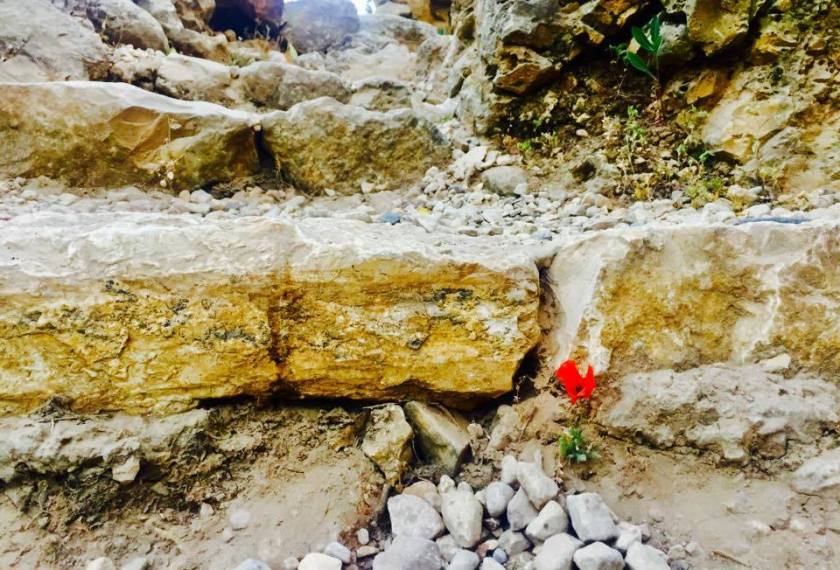
____________________________________________________________________________________________
APA Citation: Gottesman, S. (2017, June 7). Disruptions and Reflections: On Asking “Why?” Here and Now. Retrieved from: https://musicintervention.wordpress.com/2017/06/07/disruptions-and-reflections-on-asking-why-here-and-now/
REFERENCES
Crenshaw, K. (1989). Demarginalizing the intersection of race and sex: A black feminist critique of antidiscrimination doctrine, feminist theory and antiracist politics. U. Chi. Legal F., 139.
Freire, P. (1970). Pedagogy of the Oppressed, trans. Myra Bergman Ramos. New York, NY: Continuum.
Gay, R. (2014). Bad feminist. Hachette UK.
Greene, M. (1995). Releasing the imagination: Essays on education, the arts, and social change. San Francisco, CA: Jossey-Bass.
Holloway, D. L., & Krensky, B. (2001). Introduction: The arts, urban education, and social change.
Hooks, B. (2014). Teaching to transgress. Routledge.
Hooks, B. (2000). All about love: New visions. William Morrow.
Small, C. (1995). Musicking: A ritual in social space. A lecture at the University of Melbourne June 6.

